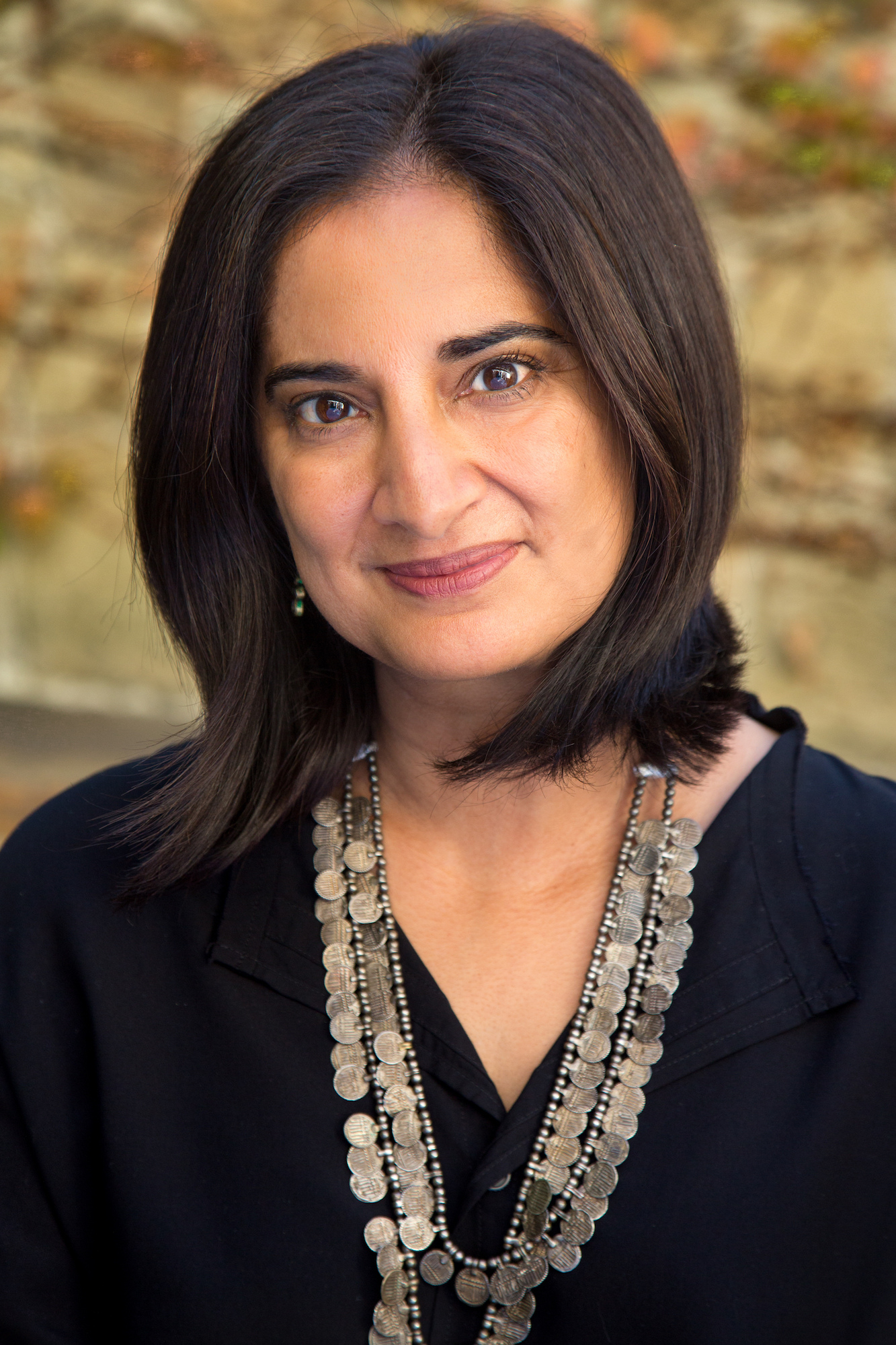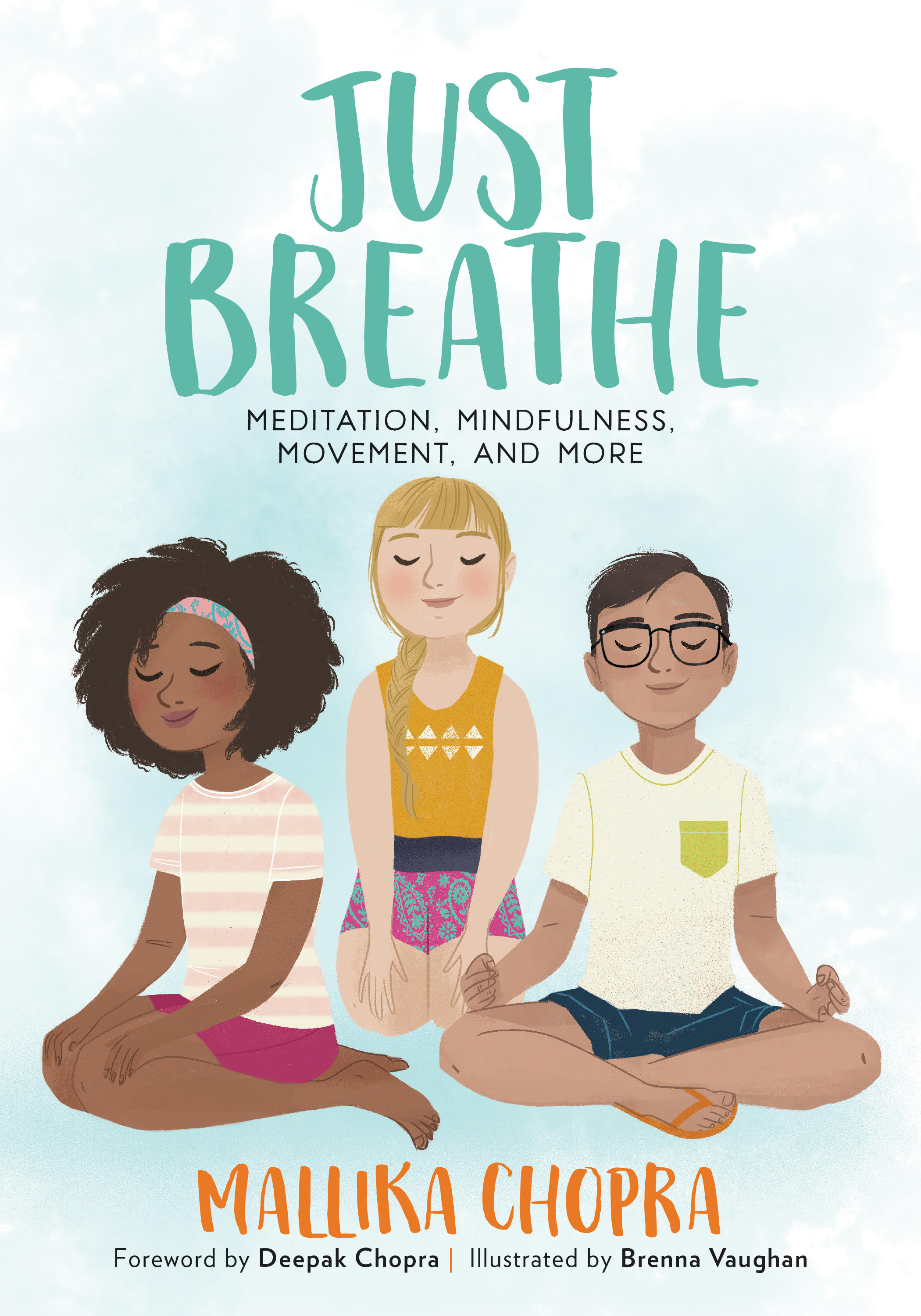Meet Mallika Chopra, and read an excerpt and practice from her new book for tweens “Just Breathe”
Interviewed by Marlena Trafas
“At the end of the day, breathing is just breathing. Being aware is just being aware. These techniques can be used and discovered at any age!”
excerpt and practice from
“Just Breathe: Meditation, Mindfulness, Movement, and More”
Do you ever get butterflies in your stomach? It’s that fluttery, dizzying feeling inside you. Perhaps you feel them fly around the morning before the first day of school? Or when you are heading to a new summer camp where you don’t know anyone. Or when your coach has just told you that after the next time-out, you are going to have to play those last few seconds of a tie game.
You feel your breath and heartbeat getting faster as you are both excited and nervous. But those butterflies just won’t go away, no matter what.
Here’s something you can do to help get that feeling to leave your stomach. You may want to try it a few times at home so when you need to do it in a nervous situation, you know how:
Time Needed: Less than a minute
Location: Anywhere
Notice where the butterflies are most crazy. Maybe they are making your head light. Or you feel them in your arms and head. Or your heart. Or your stomach. Or all over!
Choose one area and actually think of colorful butterflies. Blue. Red. Yellow. Purple. Beautiful, colorful butterflies!
Now, take a deep breath through your nose.
Pause. And get ready to blow them away.
Then, BLOW those butterflies away by pushing your breath out from your mouth.
Try it again.
Find the butterflies.
Breathe in deep.
Pause and get ready to really blow them away.
Push your breath out from your mouth and imagine those beautiful, colorful butterflies flying far away!
*The above excerpt is just one of the many exercises found in Mallika Chopra’s newest book, Just Breathe: Meditation, Mindfulness, Movement, and More. While the book is formally a guide for children 8-12 years old, adults can also learn valuable lessons and practices for living mindfully.
Editor’s note
Chopra is a mom, entrepreneur, author, and public speaker who has shared her ideas of mindfulness and intent through books, articles, and speeches. She is the founder and CEO of Intentblog.com where she blogs about her journey towards a meaningful, joyous, and balanced lifestyle. Her previous book, Living With Intent: My Somewhat Messy Journey to Purpose, Peace, and Joy allowed Chopra to connect with others on a grand scale through speaking engagements, mediations, and publications.
In this interview, she discusses learning meditation from her father, the legacy of mindful practice, and the physical imagery of personal intent.
The book pulls from your personal experience as a mom of two daughters. What about motherhood and raising children inspired you to focus on the mindfulness and meditation of 8-12-years-olds?
As a mom, I know intimately the stress that my kids, and their friends, face today. We live in a hyper-stimulated environment with messages bombarding our kids at all times, and a natural tendency to overschedule and keep them busy. Meditation and mindfulness exercises help them experience silence, and to be more comfortable with just being. As a mom, it was imperative for me to share whatever tools I had to help them cope in this confusing world!
Your father, Deepak chopra, wrote the foreword to the book and you learned to meditate when you were nine. What parts of mindfulness, meditation, and mental well-being are passed down generationally? What advice do we owe our kids when it comes to understanding the world and their place in it?
As parents, when we find our own practice, we are more present and empathetic to our children. When I learned how to meditate at nine years old, I wanted to learn because meditation had transformed my parents lives, and in turn, our family life was better. As parents we lead by example, not just words. Many of us adults are struggling to find our understanding and place in the world — we can teach our kids best by letting them know we still ask questions.
Do you think older generations would be different if your book had been required reading 10, 20, 30 years ago? How do you see your book shaping the relationships and mental health of the coming generations?
Meditation and mindfulness practices have existed in wisdom traditions around the world for centuries. These are tools that have shaped cultures and nurtured individuals for generations. And, 30 years ago there was a wave of meditation interest in the West when Maharishi Mahesh Yogi introduced Transcendental Meditation to the world (which is what I learned). Part of these practices is accepting the now, and this unique moment in our own history. But, I believe that every time has its own challenges — and these practices help individuals cope better. My goal is just to continue teaching techniques that have helped me and my family.
Although geared towards 8-12-year-olds, I found the information and exercises in the book very helpful. Can emerging adults read this book and get something out of it as well? What may older people need to consider, outside of what’s covered here in your book?
So interesting! I have gotten so much feedback from adults that this book has been one of the easiest books on meditation for them. I think because it is written for kids, I just presented the how-to of mindfulness and meditation, and didn’t dive into much of the intellectual concepts. At the end of the day, breathing is just breathing. Being aware is just being aware. These techniques can be used and discovered at any age! I think if people are intrigued by what they are experiencing in their meditations, they can always dive deeper with an intellectual understanding.
You have a blog called Intentblog.com. What part of sharing your journey online, in a blog format, contributes to your mindfulness and your intent?
The blog allows me to share what I am thinking and experiencing in the now vs. in a book that takes a year and half to write and publish! I have found that in this time of instant sharing, even the blog now seems more involved and I post on social media (Instagram, FB and Twitter) more!
Near the end of the book when you explain what “Intent” is, you use the metaphorical image of a seed being planted inside you and growing; you also say how your intent is like the anchor of a ship in rough waters. How does physical imagery and analogy like this help us set up and fulfill our intent?
An intent represents who we aspire to be as individuals, members of our family and communities, and citizens of Mother Earth. Intents are those deep desires of our soul — like being happy, inspired, connected, and feeling relevant. This can be a hard concept to grasp —for adults and children — because we live in a very goal-oriented society. I like the analogy of a seed, because it’s easier to grasp that we plant something deep inside of ourselves, not knowing exactly what it will grow into, but trust that it will blossom into a beautiful flower.
Just Breathe: Meditation, Mindfulness, Movement, and More is available at Amazon, Barnes & Noble, as well as other booksellers.

